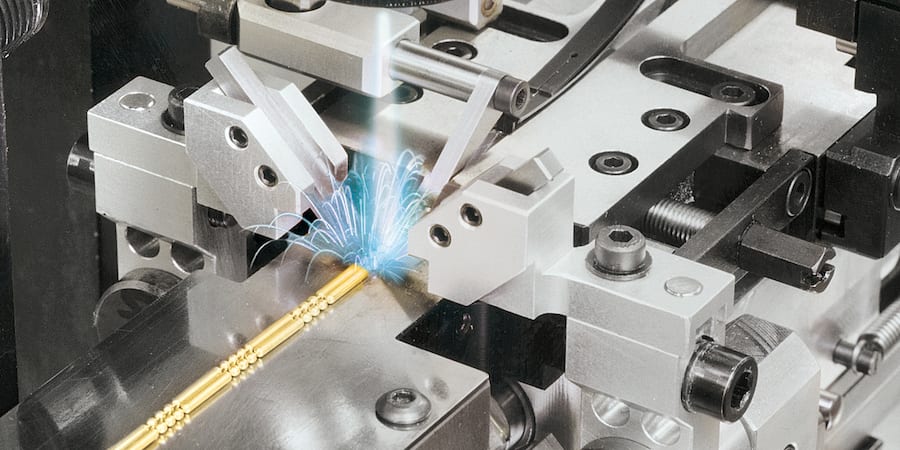
The lean journey of Sisma towards continuous innovation
INTERVIEW – Italy-based precision machinery manufacturer Sisma has changed skin many times over the years. We sat down with its general manager to learn how the firm has been able to continuously innovate over the years.
Interviewee: Vittorio Gaudino, General Manager, Sisma SpA
Roberto Priolo: Can you introduce Sisma to our readers, please?
Vittorio Gaudino: Sisma designs and produces innovative systems and solutions using micro-mechanical precision equipment, lasers of up to 1 kW and additive manufacturing (3D) for the jewelry, manufacturing and, more recently, dental industries. We are located in Piovene Rocchette, near Vicenza (in the Italian region of Veneto), and employ 180 people.

RP: As a business, you have been around since 1961. Have you always supplied these three industries?
VG: Fifty-five years ago, we actually started in a completely different sector. Back then, Schio was the capital of the Italian textile industry and Sisma was a subcontractor supplying high-precision machinery to it. Our origins, like Toyota’s, are in looms, come to think to it – so maybe lean was written in the stars for us.
When the textile industry entered a crisis it would never fully recover from, Sisma moved towards another sector typical of this part of Italy – jewelry. Specifically, our expertise lay in creating the machine used to produce chains. We are talking about micro-mechanics, and of equipment able to reach a high productivity of up to 500 rpm.
But the world kept changing, and our market saw yet another change: a push towards cleaner welding technologies (the process till then had been traditionally quite “polluting”, with lots of scrap material). In the early 2000s, Sisma took its first real innovative leap, introducing laser technology for such processes.
RP: So, how and when did you expand to Industry and Dental?
VG: After mastering laser welding on chains, we started our analysis to understand which process in our jewelry market could have been “contaminated” by laser technology. Therefore, we extended the use of this technology to other processes, like cutting, marking and engraving.
As a second step, we wondered whether our expertise could be used in applications outside of the jewelry sector. That’s when we entered the industry market.
Our expansion in the dental sector is much more recent. In 2013, while looking for new applications for our laser technology, we developed a 3D metal powder printer for the jewelry sector. We thought the machine could represent the oxygen Sisma needed to stay ahead of competitors (the jewelry industry in Veneto had retained expertise, but lost ground to Asian firms for years). We presented it at an exhibition, where we caught the attention of Trumpf Group, which showed so much interest that in mid-2014 Sisma started a joint venture with the German giant to produce the 3D printers here in Schio. It was and still is a huge success.
At the same time, we went deeper into our analysis of the market, and what emerged was that the dental sector was one of the most interested and mature segments we could focus on. In the dental industry, the use of 3D printing technology was already conceived as part of the manufacturing process, rather than something that belongs to the prototyping phase. We decided to pursue this new opportunity and created our dental division.
RP: Sisma showed an incredible ability to innovate and adapt to market changes over time. How did it achieve that?

VG: It’s true, we have been able to interpret the needs of the market over time, even though at first this happened because we followed our guts, not because we had a system in place to make us flexible. In a way, when you evolve within one sector, you are naturally pushed to come up with new technologies, products, and applications, but that’s not to say that each time we introduced something new we didn’t have to start from scratch.
Indeed, each time we changed skin, we had to find a way to develop the new capabilities we needed and change our approach to best meet our customers’ requirements. We didn’t know it then, but a lot of what we did was inspired by lean thinking (or at least in line with its teachings).
In 2009, we started to become a bit more systematic about the way we approached new projects. We wanted to find what our values were, bring some structure into the way we analysed customer needs, and begin to think about where we wanted to go as a business. So, we started to implement the first lean tools, monitor projects, organize more meetings, and work with our strategic goals in mind. (Our first lean efforts – with the help of Roberto Ronzani of the Istituto Lean Management – were limited to production and product development.)
It wasn’t until 2013, however, that we decided to expand the reach of lean within Sisma and to think more strategically. That’s when lean truly became our guiding star.
To me, the fact that we unknowingly “did lean” for so long – almost as if it were written in our DNA – is proof of the fundamental soundness and inherent “goodness” of those concepts. It was lean (and lean-like thinking before it) that allowed us to continuously adapt to new trends in the market.
RP: In what other ways has lean helped you?
VG: First, by helping us with the preparation work we must carry out before we venture into a new market. “Just going in” is not really an option these days, as the risks are just too high. Secondly, lean helped us to deal with the extreme complexity we face. Laser technology has many applications, we make many products, and each industry we serve ends up becoming a “firm within the firm” for us, so bringing order, structure and rigor to what we do (and visualizing it) has become a priority. We might have been able to afford being less systematic at first, but we can't any more.
To inform our strategic moves, we are relying on the five dimensions of the Lean Transformation Framework. It makes it easier to start from the zero with every new adventure, and this will be particularly important with Industry 4.0, as our machines will be expected to successfully interact with our clients’ processes and systems (which requires a lot of planning and a deep understanding of their needs).
In general, with lean we have created the basis for a more scientific approach to the work we do. We look forward to our future challenges, knowing fully well we have in lean everything we need to face them head-on.
THE INTERVIEWEE

Read more


ROUNDUP – Our editor discusses A3 Thinking and its various uses, curating a list of the best Planet Lean articles published on this topic over the years.


FEATURE – Lean management forces us to look at our IT service management from a different perspective and helps us to ensure it really supports our organizational needs.


FEATURE – In an excerpt from his new book, the author discusses the importance of building collaboration in your teams and explains why this is the only way to consistently deliver value.


INTERVIEW - What do the United States Army’s Special Forces unit and Toyota have in common? To find out, we spoke to the Green Berets’ former Director of Training at the LEI summit in New Orleans.

